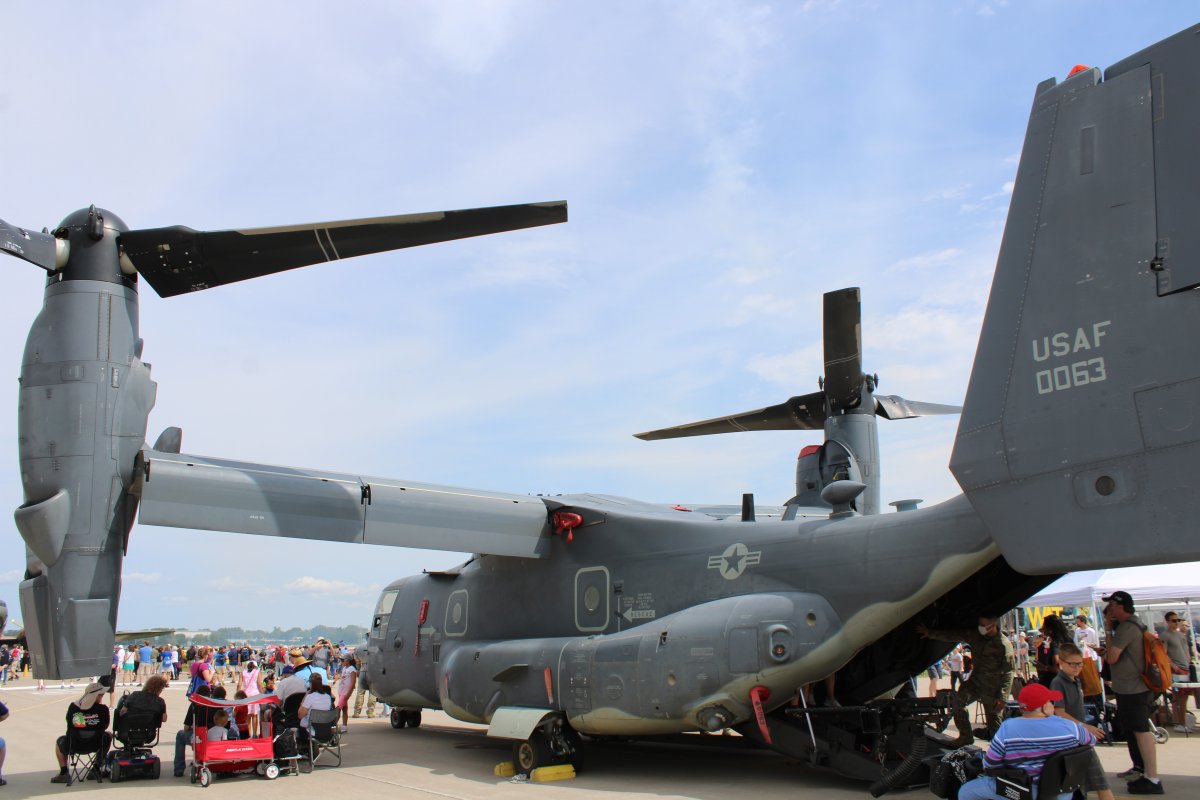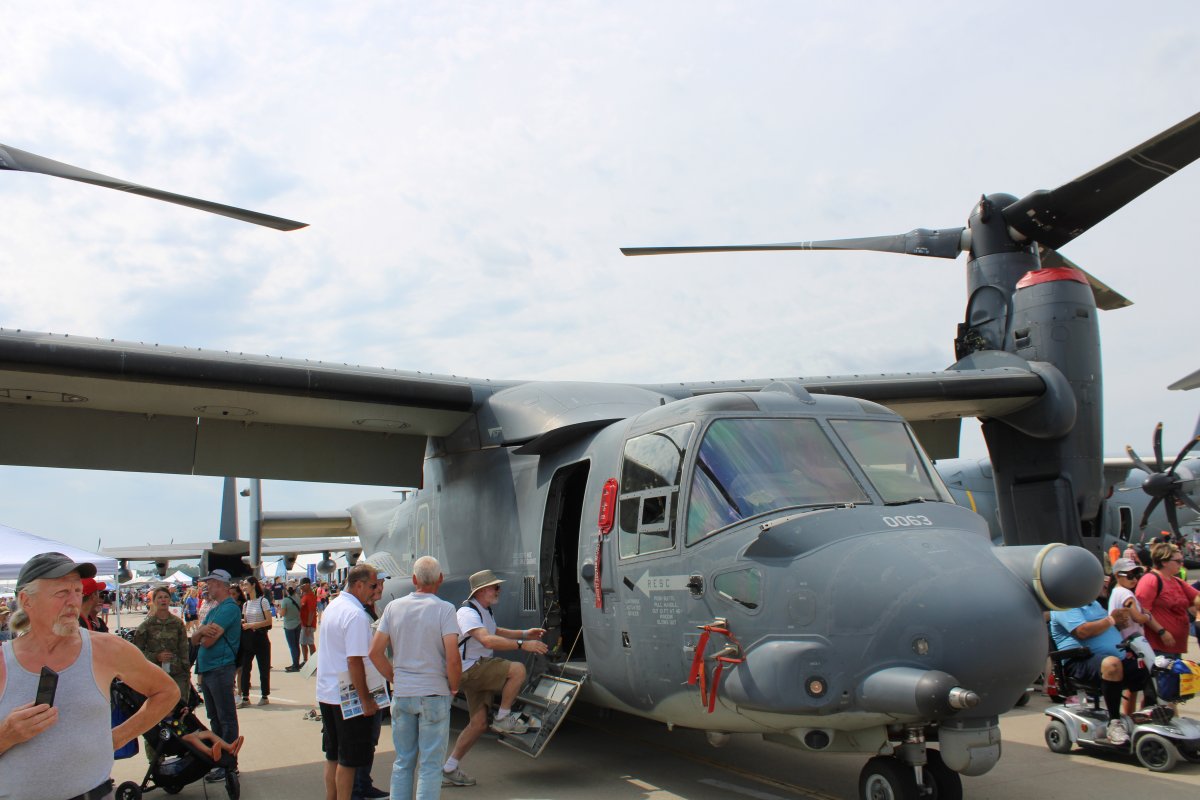AirVenture 2021 - Modern Warbirds
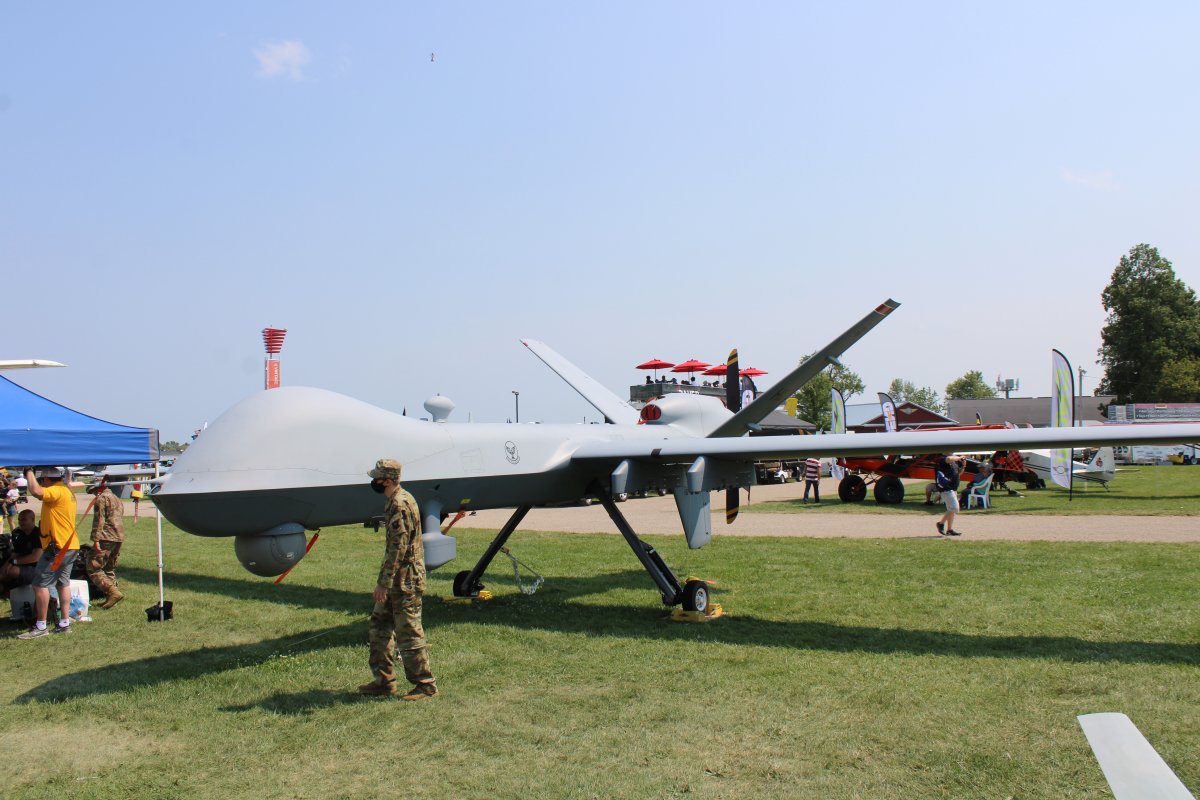
A four-engine German Luftwaffe transports with some wild propeller blades.
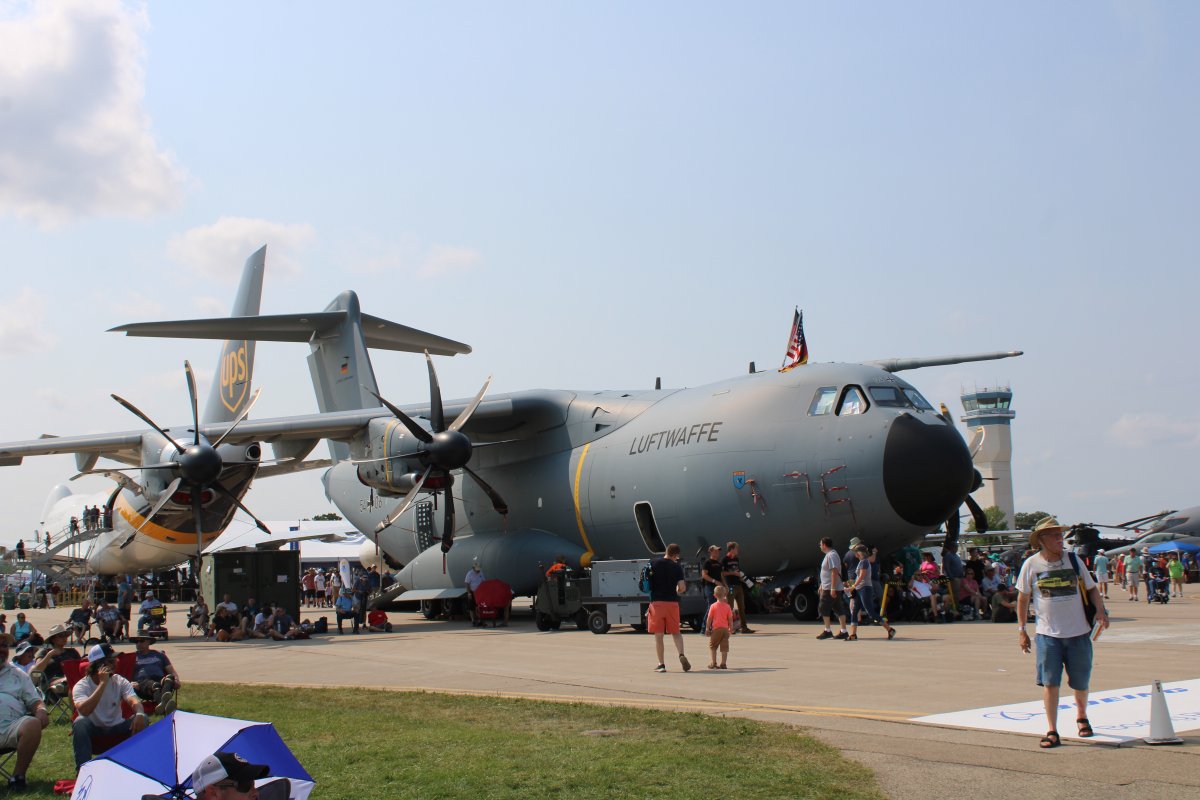
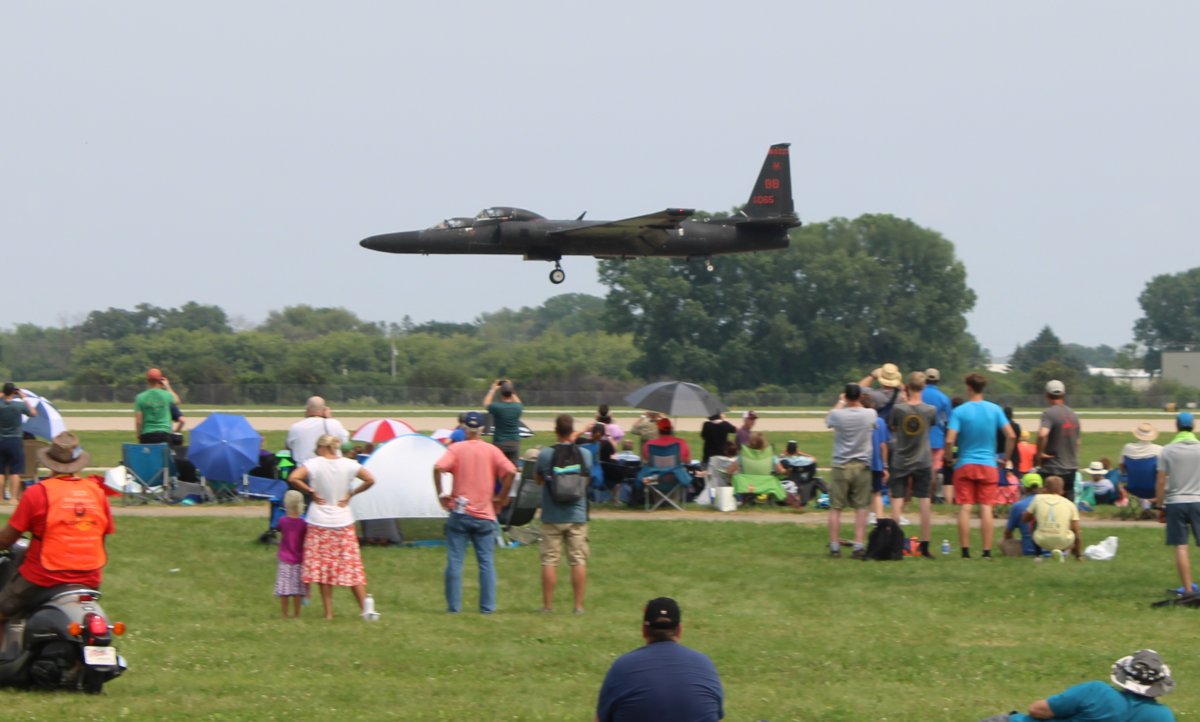
An A-10 Warthot with an unusual paint scheme.
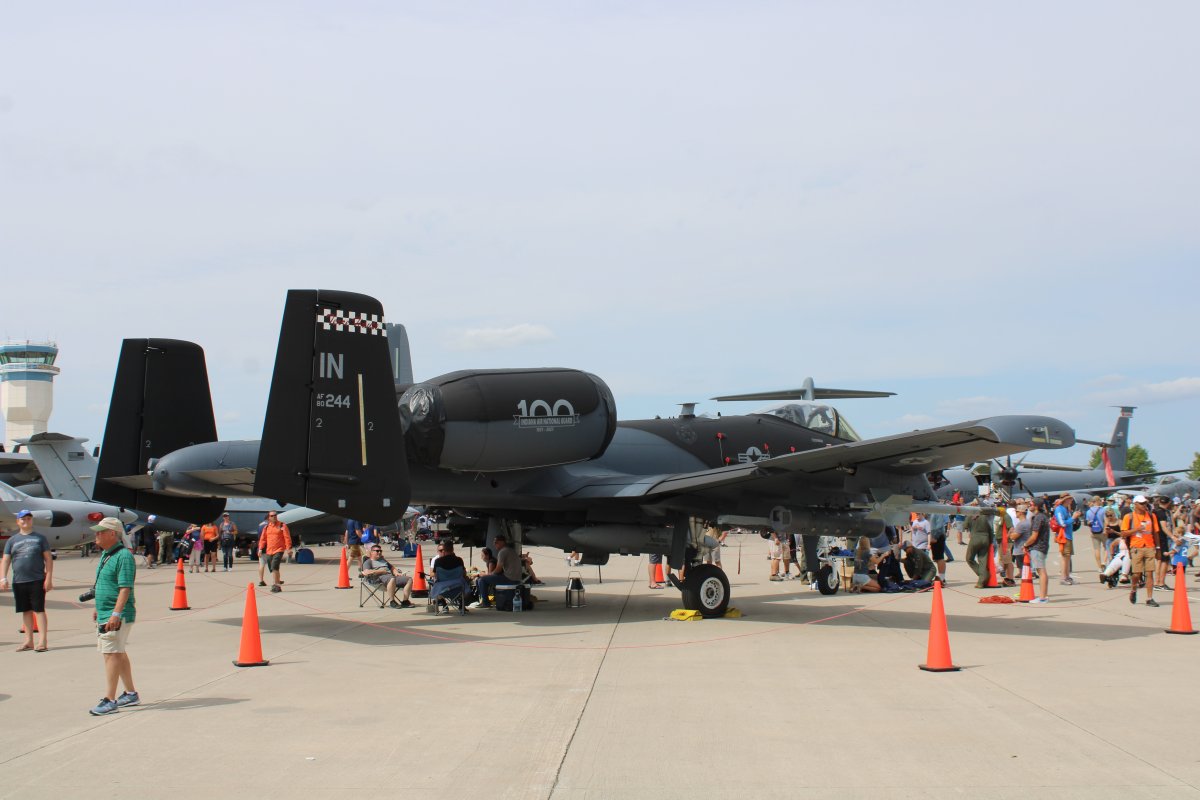
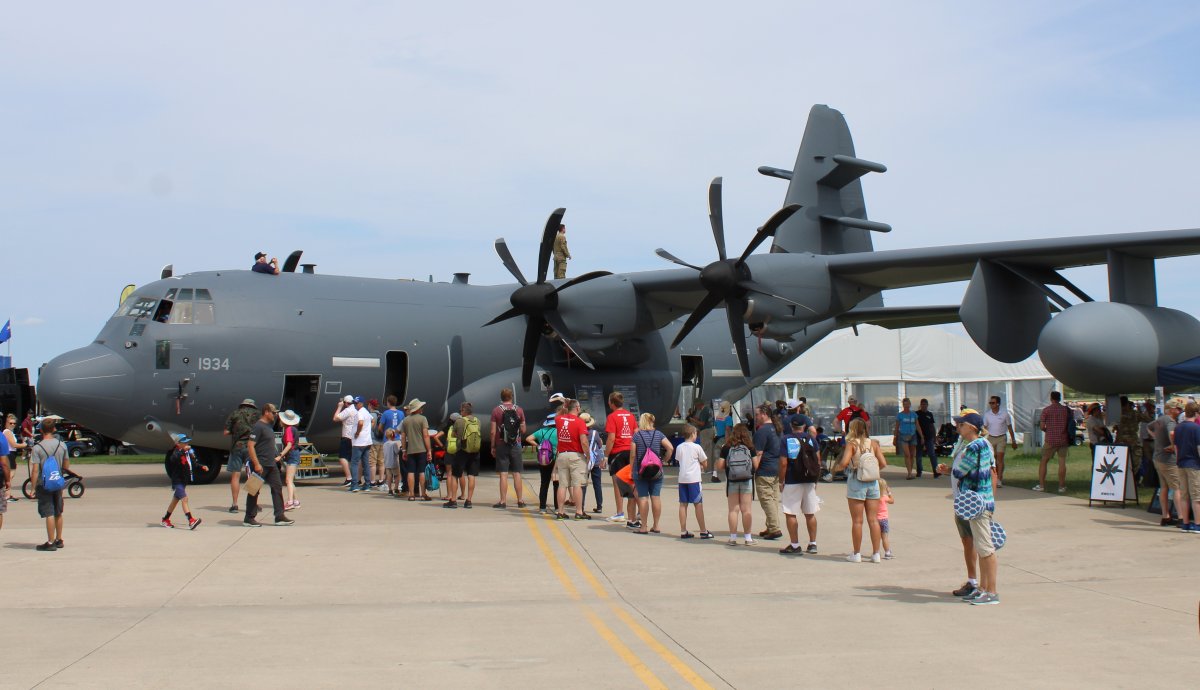
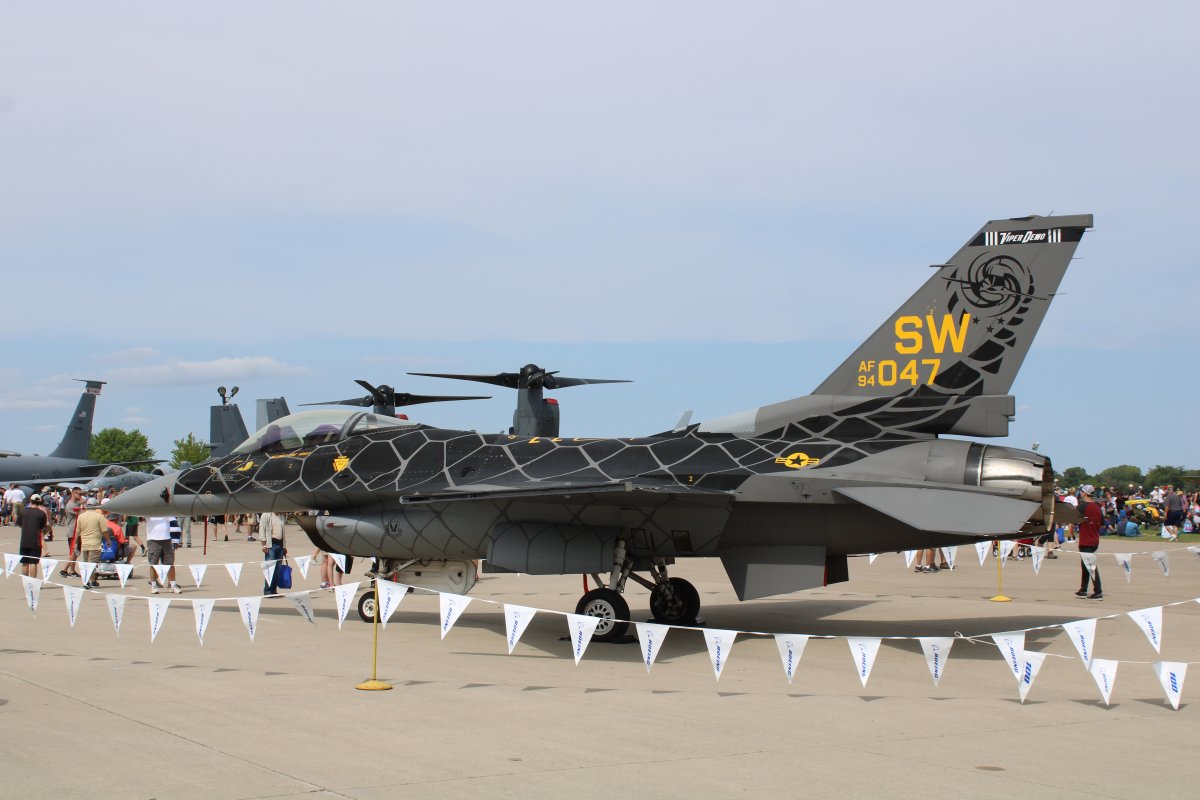
The U.S. Navy's mainstay fighter/bomber, the F-18F SuperHornet (also known as the Rhino). About half the Navy's SuperHornet squadrons fly the single-seat F-18E version. The other half fly the two-seat F-18F version. The Navy has about 600 of them. This Rhino belongs to the VX-9 Vampires, an Air Test and Evaluation Squadron.
The Super Hornet is largely a new aircraft at about 20% larger, 7,000 lb heavier empty weight, and 15,000 lb heavier maximum weight than the original Hornet. The Super Hornet carries 33% more internal fuel, increasing mission range by 41% and endurance by 50% over the "Legacy" Hornet.
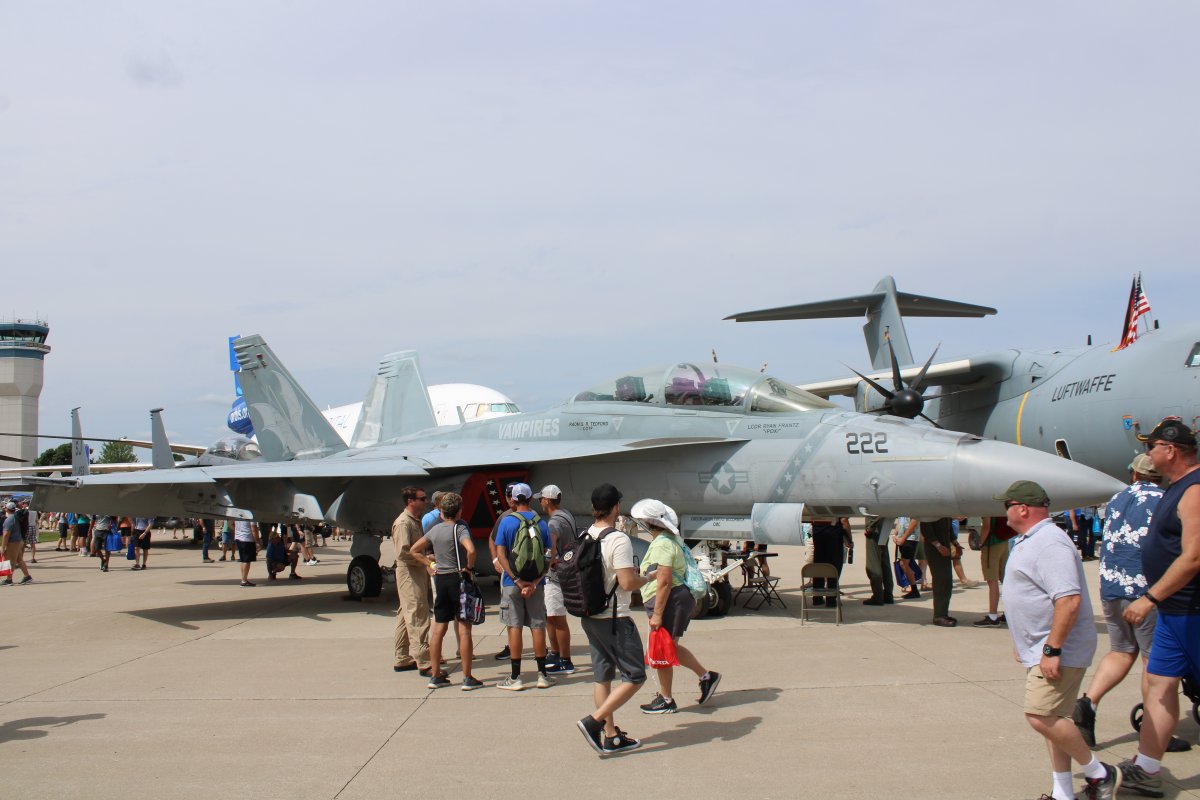
I've never seen one of these up close. It's a V-22 Osprey. The U.S. military has about 400 of them.
